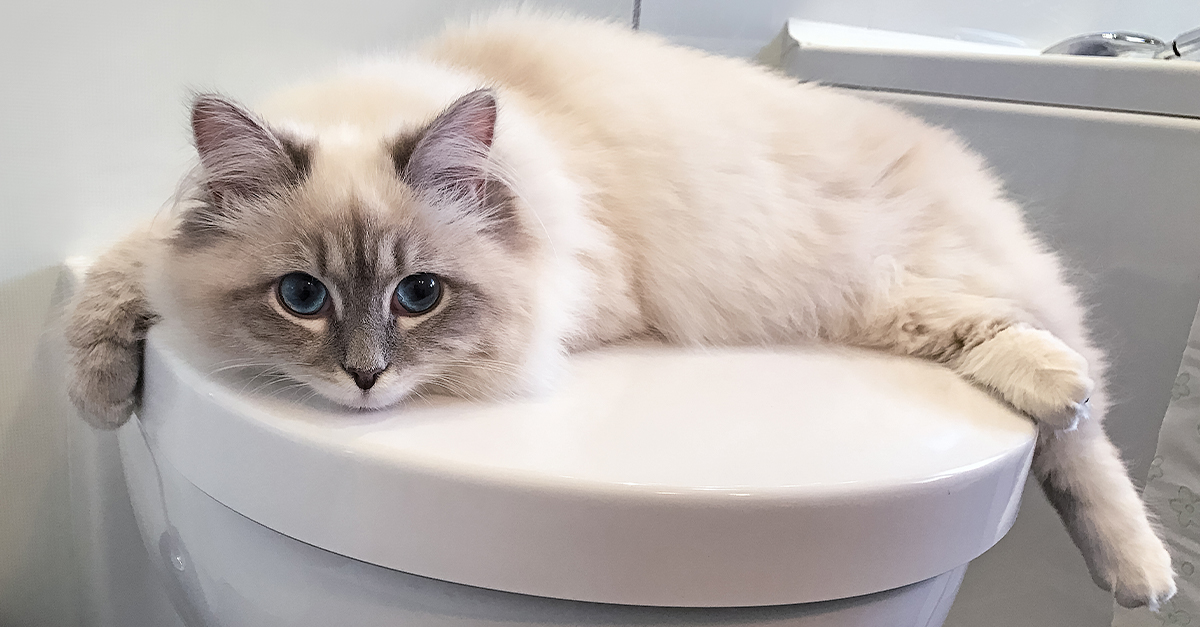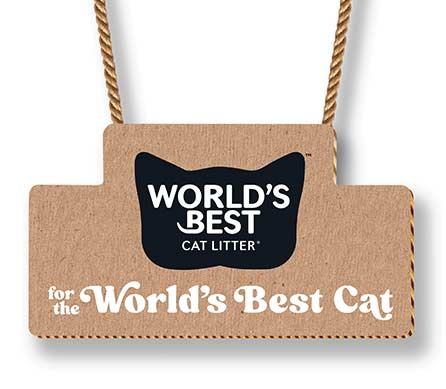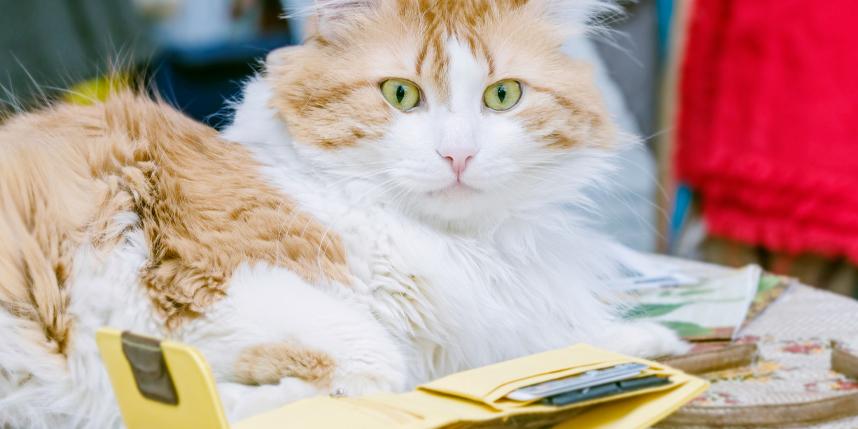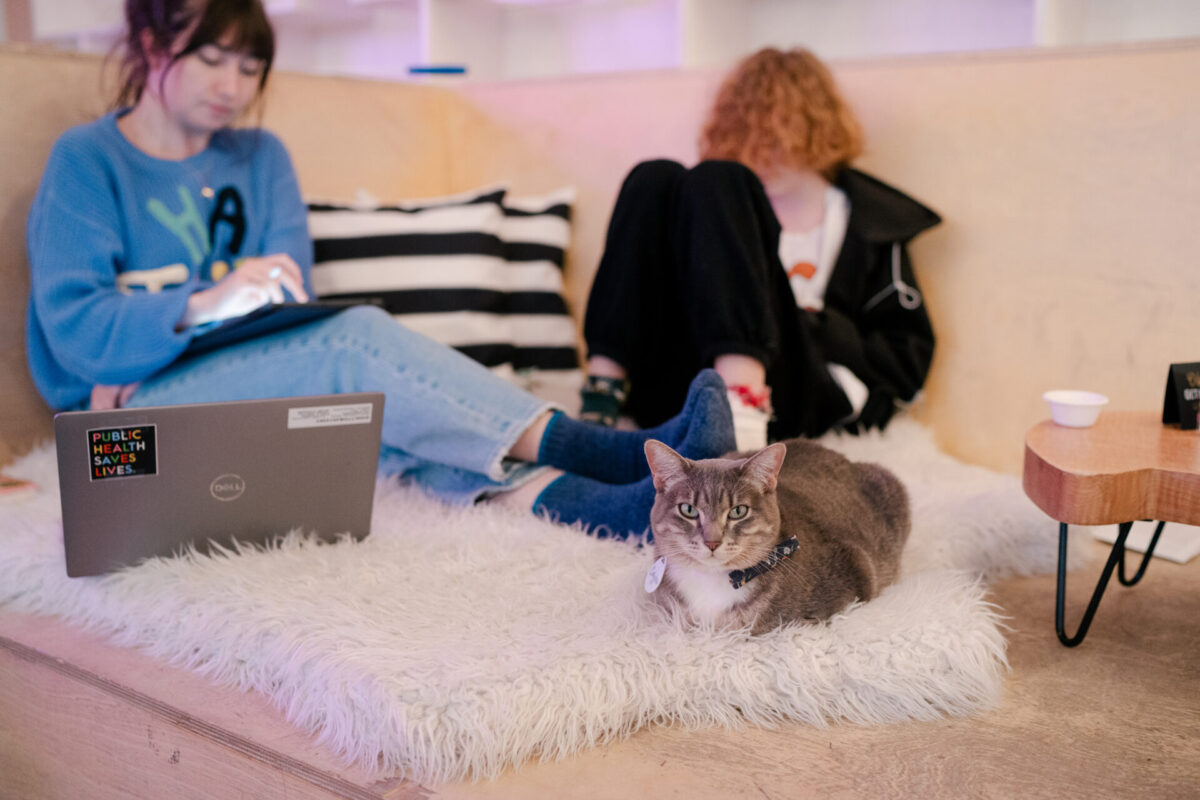IS LAVENDER SCENTED LITTER SAFE FOR CATS?
Wondering whether lavender scented cat litter is safe for cats? Learn the science behind our scented cat litter and why it’s safe for cats.

Is World’s Best Cat Litter®️ Flushable?
Looking for a better way to clean the litter box? The traditional method of scooping, bagging and tossing litter in the trash isn’t always ideal.
For many cat parents, flushable cat litter is not only a more convenient option, but a more environmentally-friendly option as well. The litter box can be kept in the bathroom where clumps can be scooped directly into the toilet.
Let’s flush out the details a little more shall we?
World’s Best Cat Litter®️: Flushable or Not?
Yes, all formulas of World’s Best Cat Litter®️ are flushable*! Rigorous testing from an independent expert lab showed all our formulas are flushable and safe for both sewer and septic systems—surpassing not only the US standards, but also the global flushability standards.
Unlike traditional, clay-based litters, World’s Best Cat Litter®️ is made from whole-kernel corn and doesn’t require filling your trash with bags of soiled litter. Simply scoop, flush and move on with your day!

*Designed to flush in well-maintained systems. Flush only 1-2 clumps of World’s Best Cat Litter®️ at a time in the toilet.
Is Clay Litter Flushable?
Clumping clay litters are not flushable, because they’re made from bentonite clay. Bentonite clay forms a cement-like compound in water, so flushing it could clog pipes or damage septic systems. Because of this, using traditional clay litter means also signing up for endless trips to the trash.
What’s more is, almost all bentonite clay is strip mined – a process that’s known to be environmentally destructive. Because clay litter can’t be flushed, large amounts of it end up in landfills and doesn’t biodegrade like natural litters.
Is Flushable Cat Litter Bad for the Environment?
In recent years, scientists have become more aware of a serious illness called Toxoplasmosis, which is caused by a parasite, Toxoplasmosis Gondii, sometimes found in wild and domestic cat feces. Knowing how to prevent your cats from becoming infected and how to care for an infected cat can help ensure this parasite is not spread by flushing cat litter.
How Do CAts Get Toxoplasmosis?
Toxoplasmosis is most often contracted by cats after eating infected prey such as mice or birds. Keeping your cats indoors at all time will significantly reduce their risk of becoming infected.
If a cat has Toxoplasmosis, they typically won’t show symptoms but will shed the T. gondii parasite in their stool for 1-3 weeks. After three weeks, there is no risk for transmission. Even when cats are shedding the parasite, it takes at least 24 hours (and up to 5 days) for the parasite to grow into a state that can infect humans.
How to Prevent the Spread of Toxoplasmosis

When you get a new cat, particularly a stray, keep him/her separate from other cats for 3 weeks. Do not flush their litter during this this time period. Sanitize their litterbox with boiling water, and as always when cleaning the litter box, wash your hands carefully. Scoop the litter box daily to help prevent the spread of Toxoplasmosis.
Why Should You Switch to Flushable World’s Best Cat Litter®️?
Want a litter that’s less work AND more eco-friendly? It’s only natural.
Making the switch to World’s Best Cat Litter®️ means you’re choosing litters made from renewable, planet-friendly corn grown right here in the United States. Our eight different formulas offer added natural ingredients to help solve the biggest litter box challenges faced by cat owners. With World’s Best Cat Litter®️ there’s no need to chisel or scrape the litter box, because the corn granules naturally clump quickly for easy scooping.

How to Flush World’s Best Cat Litter®️
Scoop one to two clumps of World’s Best Cat Litter®️ at a time into the toilet where they’ll quickly break down, then flush! It’s as simple as that.
World’s Best Cat Litter®️ went through a rigorous testing process to make sure that our litter won’t clog pipes, sewers, or septic systems when flushed.Get more insight, tips and tricks for the litter box over on our blog.




